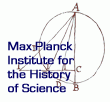Religious Books in the Library of Emmanuel Ximenez
The large number of religious books in Ximenez's library can be contextualized within the growing market for such texts at the turn of the seventeenth century in the Spanish Netherlands, Spain, and the Spanish Americas. Some of these books might have been inherited from Emmanuel's uncle Fernão, the previous owner of the house, or purchased by other family members, but documentary evidence for Emmanuel's eager acquisition of books indicates that he must have bought most of the volumes himself. The library's religious books, which are in Latin, Dutch, Spanish, French, and English, would have both reflected and shaped the Catholic identity of the Ximenez-da Vega family.
Appraised at 200 florins, the most precious book in the library was the Antwerp Polyglot Bible (1569-1572) commissioned by Philip II and executed under the supervision of Benito Arias Montano. The next most expensive was the lavishly illustrated Evangelicae historiae imagines by the Jesuit Jerónimo Nadal, published in 1593 in Antwerp, appraised at 18 florins. There were also two editions of the Biblia sacra (Plantin's 1574 vigesimo-quarto bible of 1574 and an illustrated bible published with Kerver in Paris in 1573), the 1581 bible concordance published by Plantin, a number of biblical commentaries by Arias Montanus, a breviary, and several catechisms. Most of the inventory's entries on books, however, refer to popular meditative, mystical, and spiritual works. Among them are both a Latin and a Portuguese copy of the Stimulus divini amoris (Sting of Divine Love), at that time ascribed to Bonaventura; Latin and German editions of Johannes Tauler's Sermons as well as an Italian copy of his Meditations; German and Latin editions of Thomas à Kempis's Imitation of Christ; and several editions of Ignatius of Loyola's Spiritual Exercises. More recent publications included the Mística Teología by Jerónimo Gracián (Hieronymus a Matre Dei), Saint Teresa's spiritual director whom the Archdukes had invited to Brussels in 1606, as well as three works by the Leuven Jesuit Leonardus Lessius (1554-1623). The latter were the mystical treatises Disputatio de statu vitae deligendo et religionis ingressu (a guidebook concerning religious vocation) and De providentia numinis et animi immortalitate ("on providence and the immortality of the soul"), and Hygiasticon (a treatise on diet and health); all were published with Plantin in 1613.
Interestingly, vitae of saints are not prominent among the religious books in Ximenez's library, despite the fact that such texts were among the most widely sold at the time. The only true hagiography in the library appears to have been a manuscript copy of the life of Catherine of Genoa. Instead the family's taste seems to have been more for polemical texts expounding the legitimacy of Catholic beliefs and practices, such as William Reynolds's Treatise on the sacraments of 1593 and Jan Boucher's Sermons de la simulée conversion of 1594, which deals with the conversion of Henry IV. Within this category also fall Justus Lipsius's book on the miraculous Virgin of Halle, published in 1607, and the Carmelite Anastasius Cochelet's defense of Lipsius against Protestant attacks (Palaestrita honores D. Hallensis pro Lipsii). The Calvini infernus of 1608, another book by Cochelet in the Ximenez library ridicules Calvin's views of hell. Also of interest is a 1510 Paris edition of the Victoria porcheti adversus impios hebreos, a work by the Genoese Carthusian monk Porcheto de Salvatici on the errors of Judaism, which might have resonated with the household's readers because of their own Iberian background and the suspicions of Jewish roots with which such a background was often associated. The Antwerp Jesuit Martin del Rio's treatise Disquisitionum magicarum libri sex ("Investigations into magic"), first published in 1599, by contrast, evidenced the family's concerns about demonic magic. Finally, the library's religious books also included works by the popular sixteenth-century theologian Luis de Granada, like the 1589 Barcelona edition of the Introduction del symbolo de la fe and Den Leytsman der sondaeren, a Dutch translation of the Guia de peccadores (The Sinner's Guide). These texts were meant to serve as practical guides for those wishing to apply Catholic principles to their daily lives.
The library also reflects an interest in the workings of the Church and the implementation of Tridentine reform more locally, containing, for example, Franciscus Costerus's regulations for the Antwerp Marian sodality. This institution, dedicated to the promotion of devotion to the Virgin, had been founded by the Jesuits in the 1580s and was one of the city's most important lay confraternities, counting Peter Paul Rubens and Anthony van Dyck among its prestigious members. Other local religious literature in the library includes a copy of the Pastorale Romanum issued by archbishop Matthias Hovius in 1598, which reaffirmed the proper form and use of church ritual for such diverse purposes as marriage and exorcism, as well as the decrees issued by the 1610 synod at Antwerp, which set out a program of reform for pastoral care in the diocese. Taken as a group, the religious texts in the library communicate both an engagement with theological issues, many of which were based or reiterated in the doctrinal decrees of the Council of Trent, and an interest in the implementation of religious reform within the South Low Countries. They also display a conformity with the religious views promoted by the Spanish court in Brussels.
Literature
Göttler, Christine. "Securing Space in a Foreign Place: Peter Paul Rubens's 'Saint Teresa' for the Portuguese Merchant-Bankers in Antwerp," The Journal of the Walters Art Gallery 57 (1999).
Lewis, Bernard. Cultures in Conflict: Christians, Muslims, and Jews in the Age of Discovery. Oxford: Oxford University Press, 1995.
Van Wyhe, Cordula. "Court and Convent: The Infanta Isabella and Her Franciscan Confessor Andréas de Soto," The Sixteenth Century Journal 35.2 (2004).
Rockox' huis volgeboekt: De bibliotheek van de Antwerpse burgemeester en kunstverzamelaar Nicolaas Rockox (1560-1640). Exh. cat., Antwerp, Museum Nicolaas Rockox. Brussels: KBC Bank, 2005.


